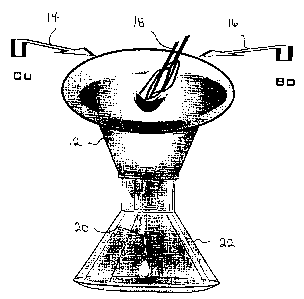Some of the information on this Web page has been provided by external sources. The Government of Canada is not responsible for the accuracy, reliability or currency of the information supplied by external sources. Users wishing to rely upon this information should consult directly with the source of the information. Content provided by external sources is not subject to official languages, privacy and accessibility requirements.
Any discrepancies in the text and image of the Claims and Abstract are due to differing posting times. Text of the Claims and Abstract are posted:
| (12) Patent: | (11) CA 2175278 |
|---|---|
| (54) English Title: | SOLIDIFIED WATER SOLUBLE WOOD PRESERVATIVE AND METHOD OF MAKING THE SAME |
| (54) French Title: | PRODUIT SOLIDIFIE HYDROSOLUBLE DE PRESERVATION DU BOIS ET METHODE DE PRODUCTION |
| Status: | Term Expired - Post Grant Beyond Limit |
| (51) International Patent Classification (IPC): |
|
|---|---|
| (72) Inventors : |
|
| (73) Owners : |
|
| (71) Applicants : | |
| (74) Agent: | NATHAN V. WOODRUFFWOODRUFF, NATHAN V. |
| (74) Associate agent: | |
| (45) Issued: | 2001-07-17 |
| (22) Filed Date: | 1996-04-29 |
| (41) Open to Public Inspection: | 1997-10-30 |
| Examination requested: | 1998-04-28 |
| Availability of licence: | N/A |
| Dedicated to the Public: | N/A |
| (25) Language of filing: | English |
| Patent Cooperation Treaty (PCT): | No |
|---|
| (30) Application Priority Data: | None |
|---|
A solidified water soluble wood preservative
characterized by a solidified elongate body of a boron compound
known as having beneficial effects as a wood preservative, in
combination with copper oxide. The method of making the
solidified water soluble wood preservative includes the
following steps. Firstly, mixing powder-form copper oxide
(CuO) and a powder-form boron compound known as having
beneficial effects as a wood preservative to form a powder
mixture. Secondly, heating the powder mixture at temperatures
in excess of 700 degrees celsius until the powder mixture melts
to form a homogeneous liquid mixture. Thirdly, forming the
homogeneous liquid mixture into a body. Fourthly, annealing
the body at temperatures of between 300 and 550 degrees
celsius.
Produit de conservation du bois solidifié soluble dans l'eau caractérisé par un corps allongé d'un composé de bore reconnu pour sa capacité de conserver le bois, combiné à de l'acide cuivrique. Le procédé de fabrication du produit de conservation du bois solidifié soluble dans l'eau comporte les étapes suivantes : premièrement, mélanger de l'oxyde cuivrique sous forme de poudre (CuO) et un composé de bore sous forme de poudre reconnu pour sa capacité de conserver le bois, pour former un mélange de poudres; deuxièmement, chauffer le mélange de poudres à une température excédant 700 degrés Celsius jusqu'à ce qu'il fonde et forme un mélange liquide homogène; troisièmement, former le mélange liquide homogène en corps; quatrièmement, recuire le corps à une température variant entre 300 et 550 degrés Celsius.
Note: Claims are shown in the official language in which they were submitted.
Note: Descriptions are shown in the official language in which they were submitted.

2024-08-01:As part of the Next Generation Patents (NGP) transition, the Canadian Patents Database (CPD) now contains a more detailed Event History, which replicates the Event Log of our new back-office solution.
Please note that "Inactive:" events refers to events no longer in use in our new back-office solution.
For a clearer understanding of the status of the application/patent presented on this page, the site Disclaimer , as well as the definitions for Patent , Event History , Maintenance Fee and Payment History should be consulted.
| Description | Date |
|---|---|
| Inactive: Expired (new Act pat) | 2016-04-29 |
| Inactive: Office letter | 2011-04-20 |
| Inactive: Office letter | 2011-04-20 |
| Revocation of Agent Requirements Determined Compliant | 2011-04-20 |
| Appointment of Agent Requirements Determined Compliant | 2011-04-20 |
| Inactive: Office letter | 2007-05-04 |
| Inactive: Corrective payment - s.78.6 Act | 2007-01-31 |
| Inactive: IPC from MCD | 2006-03-12 |
| Inactive: IPC from MCD | 2006-03-12 |
| Grant by Issuance | 2001-07-17 |
| Inactive: Cover page published | 2001-07-16 |
| Inactive: Entity size changed | 2001-05-09 |
| Pre-grant | 2001-04-02 |
| Inactive: Final fee received | 2001-04-02 |
| Letter Sent | 2001-01-10 |
| Letter Sent | 2001-01-10 |
| Notice of Allowance is Issued | 2001-01-09 |
| Letter Sent | 2001-01-09 |
| Notice of Allowance is Issued | 2001-01-09 |
| Inactive: Cover page published | 2000-12-21 |
| Inactive: Approved for allowance (AFA) | 2000-12-20 |
| Amendment Received - Voluntary Amendment | 2000-12-01 |
| Inactive: Single transfer | 2000-12-01 |
| Inactive: S.30(2) Rules - Examiner requisition | 2000-08-03 |
| Amendment Received - Voluntary Amendment | 1999-02-22 |
| Inactive: Status info is complete as of Log entry date | 1998-07-22 |
| Letter Sent | 1998-07-22 |
| Inactive: Application prosecuted on TS as of Log entry date | 1998-07-22 |
| All Requirements for Examination Determined Compliant | 1998-04-28 |
| Request for Examination Requirements Determined Compliant | 1998-04-28 |
| Application Published (Open to Public Inspection) | 1997-10-30 |
There is no abandonment history.
The last payment was received on 2001-04-02
Note : If the full payment has not been received on or before the date indicated, a further fee may be required which may be one of the following
Please refer to the CIPO Patent Fees web page to see all current fee amounts.
Note: Records showing the ownership history in alphabetical order.
| Current Owners on Record |
|---|
| GENICS INC. |
| Past Owners on Record |
|---|
| JAMES ALLEN MELNICHUK |
| JOHN DONALD PAYZANT |